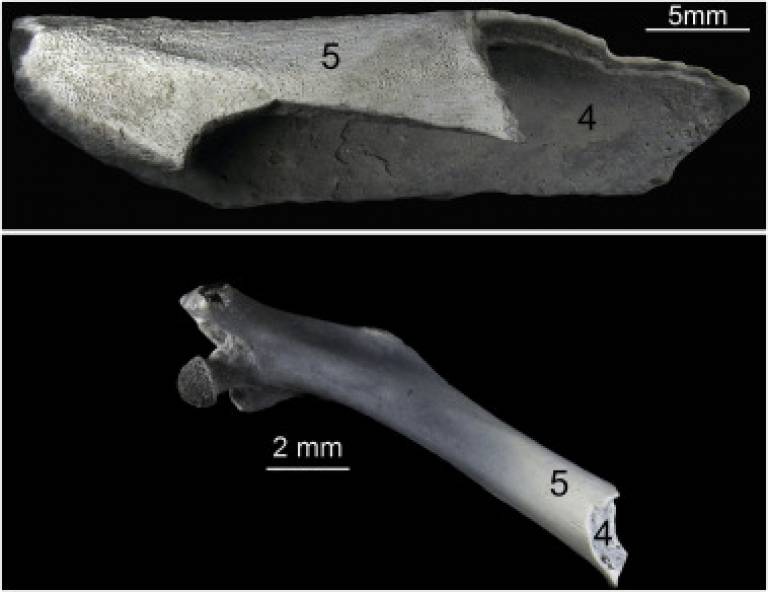Team of taphonomists propose new analytical techniques to identify hominin-induced burning on bone
6 November 2018
The understanding of hominin behavior is based on complex factors, frequently obtained from evidence left on the fossils themselves or on accompanying fauna.
 Fossil bones bearing traits of burning is a major technological innovation in human evolution and behavior. Fire helped hominins to increase their survival by using it as a defensive mechanism against other carnivores, for warming and lighting their camp sites, cooking and many other domestic uses. In this paper we focus on distinguishing evidence of bones heated and burnt at high temperatures that are incongruent with natural fires, and we provide new analytical techniques that expand the criteria to identify signs of bone burning. The presence of burnt bones has special relevance to debates on hominin living strategies and innovations. The undestanding of the many uses of fire elucidates significant evolutionary trends in hominin brain development and modern human behaviour.
Fossil bones bearing traits of burning is a major technological innovation in human evolution and behavior. Fire helped hominins to increase their survival by using it as a defensive mechanism against other carnivores, for warming and lighting their camp sites, cooking and many other domestic uses. In this paper we focus on distinguishing evidence of bones heated and burnt at high temperatures that are incongruent with natural fires, and we provide new analytical techniques that expand the criteria to identify signs of bone burning. The presence of burnt bones has special relevance to debates on hominin living strategies and innovations. The undestanding of the many uses of fire elucidates significant evolutionary trends in hominin brain development and modern human behaviour.
Taphonomy of burnt bones from Wonderwerk Cave (South Africa)
Yolanda Fernández-Jalvoa, Laura Tormo, Peter Andrews, M. Dolores Marin-Monfort
DOI: 10.1016/j.quaint.2018.05.028
 Close
Close

